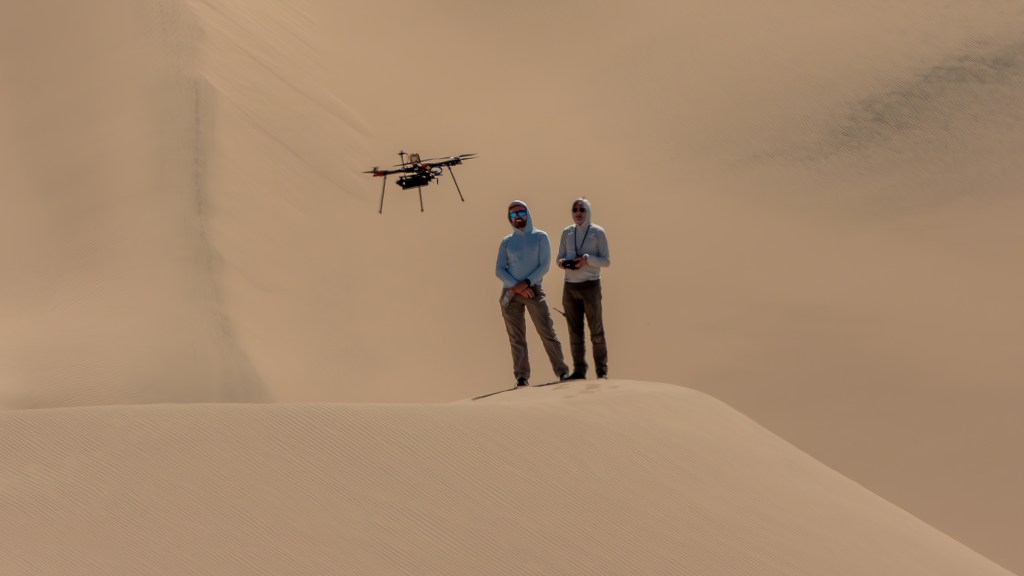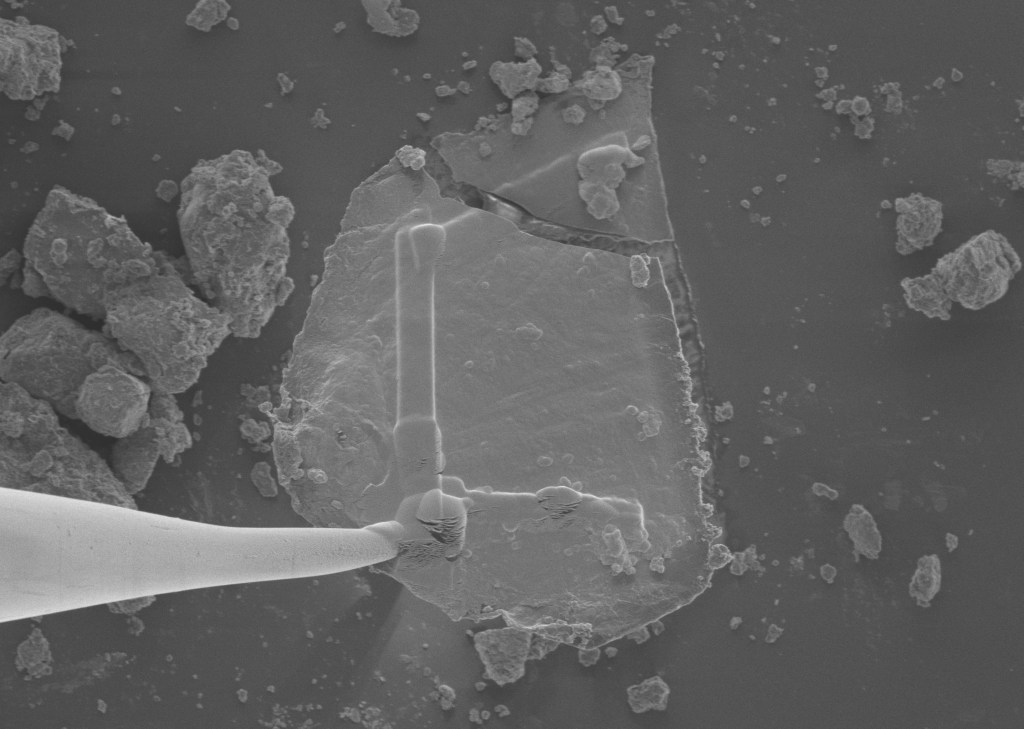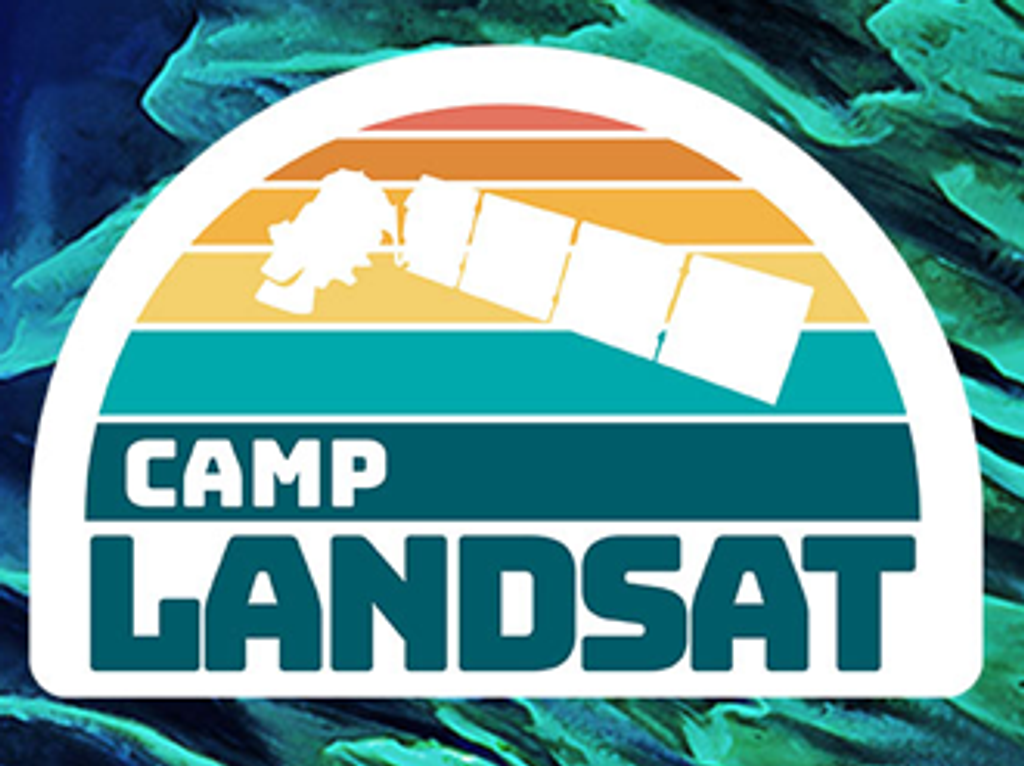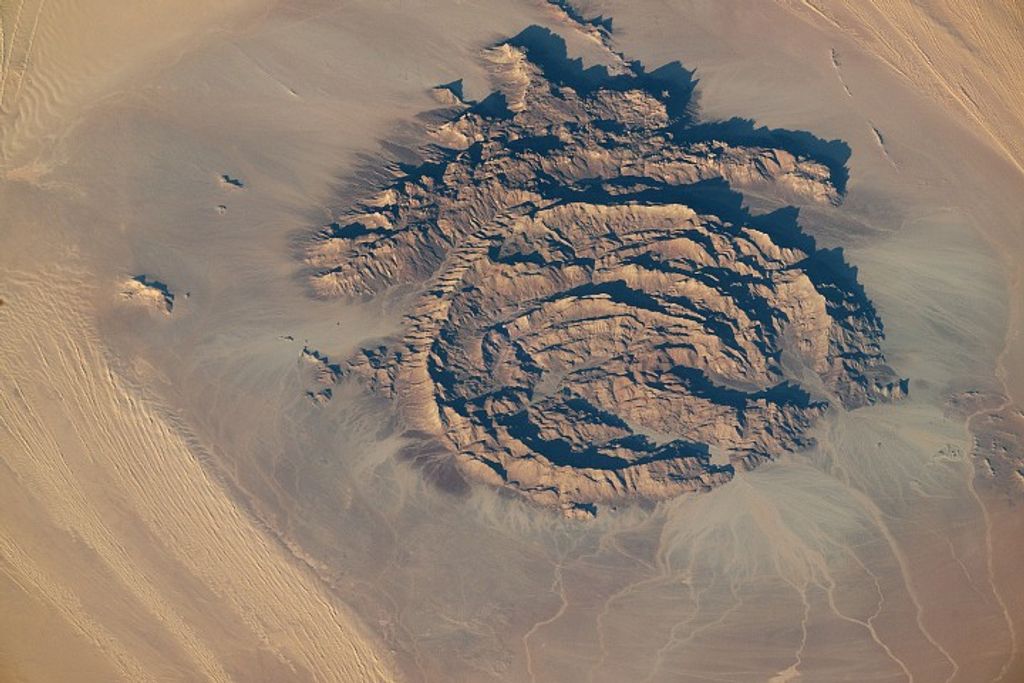In December 2001, the space shuttle Endeavour arrived at the International Space Station during the STS-108 mission. The primary goals for the four-member shuttle crew of astronauts Dominic L. Gorie, Mark E. Kelly, Linda M. Godwin, and Daniel M. Tani included bringing the Expedition 4 crew of Yuri I. Onufriyenko, representing Roscosmos, and NASA astronauts Carl E. Walz and Daniel W. Bursch to the space station and returning the Expedition 3 crew of NASA astronaut Frank L. Culbertson and Roscosmos‘ Vladimir N. Dezhurov and Mikhail V. Tyurin back to Earth. They also brought food, clothes, and science equipment to the space station and returned hardware and research samples back to Earth. Godwin and Tani completed one spacewalk to prepare the station for future assembly.



Left: The Expedition 3 crew of Mikhail V. Tyurin, representing Roscosmos, left, NASA astronaut Frank L. Culbertson, and Vladimir N. Dezhurov of Roscosmos. Middle: Dezhurov during the first Expedition 3 spacewalk, the first from the newly-arrived Pirs module. Right: The Soyuz TM32 spacecraft after its relocation to Pirs.
The Expedition 3 crew arrived aboard the space station in August 2001 for a planned four-month mission. Following the departure of the STS-105 crew aboard space shuttle Discovery on Aug. 20, Culbertson, Dezhurov, and Tyurin settled into their routine of station maintenance and research activities. Three days later, they welcomed the Progress M-45 cargo vehicle that delivered supplies for their mission. Their routine was traumatically upset by the events on Earth on Sept. 11, but they managed to complete the tasks for their day. On Sept. 17, they welcomed the arrival of the Pirs Docking Compartment, a new Russian segment module that not only included a docking port but also served as an airlock for spacewalks. A modified Progress instrument module guided Pirs to a docking at the Zvezda module’s Earth-facing port. The instrument module was jettisoned on Sept. 26, clearing the docking port. Dezhurov and Tyurin conducted the first spacewalk from Pirs on Oct. 8. It was a 4-hour, 58-minute excursion to complete connections between Zvezda and the new module. The two ventured outside again on Oct. 15, this time for 5 hours, 52 minutes to install experiment packages on the outside of Pirs. On Oct. 19, Culbertson, Dezhurov, and Tyurin donned their Sokol launch and entry suits, boarded their Soyuz TM-32 spacecraft, undocked from the Zarya module, flew around to dock at the Pirs module, and reentered the station. This activity freed up the Zarya module’s docking port for their upcoming visitors.



Left: The visiting crew of Russian cosmonauts Konstantin M. Kozeev, left, and Viktor M. Afanasyev, and French astronaut Claudie Haigneré. Middle: The departure of the Progress M-45 cargo vehicle. Right: Expedition 3 cosmonaut Mikhail V. Tyurin during the unscheduled fourth spacewalk to clear debris in the docking mechanism left behind by the departing Progress M-45.
On Oct. 21, the space station’s second visiting crew of Russian cosmonauts Viktor M. Afanasyev and Konstantin M. Kozeev, and Claudie Haigneré of the French space agency CNES launched from the Baikonur Cosmodrome in Kazakhstan. Two days later, they docked their Soyuz TM-33 spacecraft at the station’s Zarya module. The primary goals of their mission included bringing a fresh Soyuz spacecraft to the station, returning in the older vehicle that had been in orbit since April 2001, and conducting eight days of experiments as part of Haigneré’s Andromède science mission. They undocked aboard Soyuz TM-32 on Oct. 31 and landed safely in Kazakhstan three hours later. On Nov. 12, Dezhurov and Culbertson completed the third spacewalk of the expedition, a 5-hour, 4-minute outing to complete the cable connections to the Pirs module. Progress M-45 undocked from the station on Nov. 22, and during its departure it left some debris in the docking mechanism. When Progress M1-7 arrived six days later, the debris prevented a hard docking. Dezhurov and Tyurin conducted an unplanned 2-hour, 46-minute spacewalk on Dec. 3 to clear the debris, a rubber O-ring left behind by the earlier cargo vehicle, following which the new cargo craft completed a hard docking. The crew members began unloading some of its cargo as they prepared to welcome the space shuttle, bringing more supplies, as well as their replacements, to the space station.


Left: The STS-108 crew patch. Right: In the official STS-108 crew photo, the space shuttle crew of Daniel M. Tani, left, Linda M. Godwin, Dominic L. Gorie, and Mark E. Kelly are in the back row, with the Expedition 4 crew of Daniel W. Bursch, left, Yuri I. Onufriyenko, and Carl E. Walz at lower left, and the Expedition 3 crew of Mikhail V. Tyurin, left, Frank L. Culbertson, and Vladimir N. Dezhurov at lower right.
The 12th space shuttle mission to the space station, STS-108, began on Dec. 5, 2001, with the launch of space shuttle Endeavour from Launch Pad 39B at NASA’s Kennedy Space Center (KSC) in Florida. Two days after launch, Gorie guided Endeavour to a smooth docking with the station at the Pressurized Mating Adapter-2, located on the forward end of the Destiny U.S. laboratory module. Two hours later, the crews opened the hatches between the two spacecraft, enabling the 10 astronauts and cosmonauts to greet each other and share fresh foods brought by the shuttle crew.
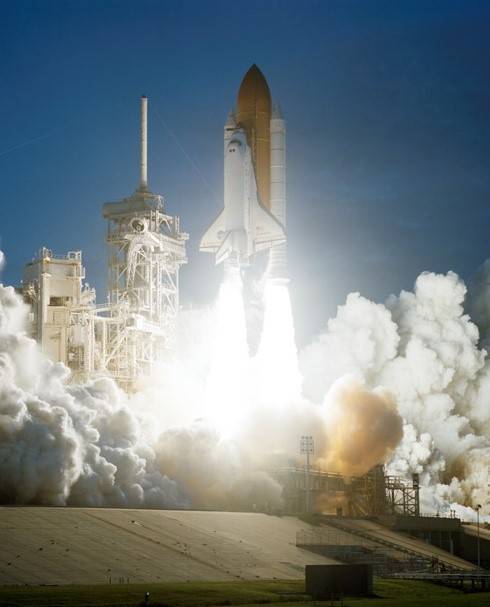


Left: Launch of Endeavour on space shuttle mission STS-108 from NASA’s Kennedy Space Center in Florida. Middle: The space station as seen from Endeavour during the rendezvous and docking. Right: Space shuttle Endeavour as seen from the space station during the approach.

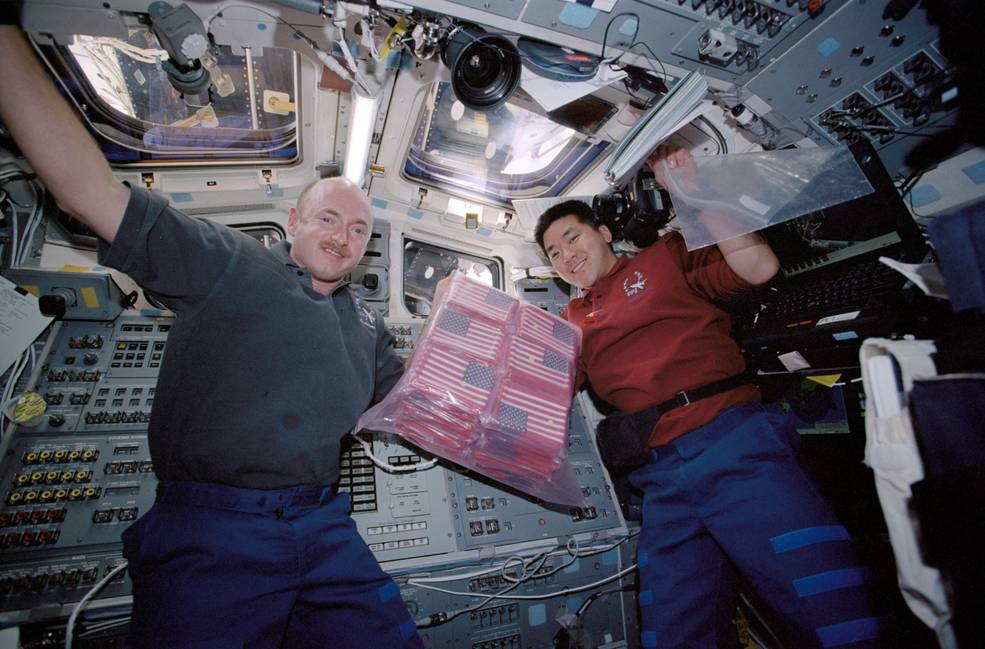
Left: STS-108 astronaut Linda M. Godwin uses the shuttle’s Remote Manipulator System to transfer the Rafaello Multi-Purpose Logistics Module (MPLM) to the space station. Right: On Endeavour’s flight deck, STS-108 astronauts Mark E. Kelly, left, and Daniel M. Tani pose with the 6,000 American flags the crew carried to honor victims of the 9/11 attacks.
The day after the docking, using the Shuttle’s Remote Manipulator System (RMS), Godwin lifted the Rafaello Multi-Purpose Logistics Module (MPLM) out of the shuttle’s cargo bay and berthed it at the Unity Node 1 module. After opening the hatch to the MPLM, the joint crews began to transfer the 6,000 pounds of supplies for the Expedition 4 crew. Onufriyenko, Walz, and Bursch transferred their seat liners to the Soyuz, making them space station residents, exchanging places with Culbertson, Dezhurov, and Tyurin who became members of the shuttle crew. On Dec. 9, the 10 crew members aboard the station and shuttle complex took a break from the cargo transfers to honor the people lost in the Sept. 11 terrorist attacks in New York, at the Pentagon, and at the crash site in Pennsylvania, as well as the first responders who rushed to the scenes. As the first shuttle flight since the attacks, STS-108 carried 6,000 small American flags that NASA later distributed to victims’ families. Endeavour also carried a U.S. flag found in the rubble of the World Trade Center, a U.S. flag that flew above the Pennsylvania state capitol, a U.S. Marine Corps colors flag from the Pentagon, a New York Fire Department flag, and a poster that included photographs of firefighters lost in the attacks. At the end of the day, the crews closed the hatches between the two spacecraft so the shuttle’s cabin pressure could be lowered in preparation for the following day’s spacewalk.


Left: During the mission’s spacewalk, STS-108 astronauts Linda M. Godwin, left, and Daniel M. Tani ridethe shuttle’s Remote Manipulator System, operated by Mark E. Kelly, to the P6 truss. Right: On the P6 truss, Godwin, left, and Tani retrieve a protective cover for return to Earth.
On Dec. 10, the mission’s sixth day, Godwin and Tani conducted the flight’s only spacewalk. After exiting Endeavour’s airlock, the two spacewalkers gathered the necessary tools and tethered themselves to the shuttle’s RMS that Kelly operated from inside the shuttle’s flight deck. He maneuvered them as far as the arm could reach, part way up the P6 truss. From there, Godwin and Tani translated to the top of the truss to install thermal blankets on the port and starboard beta gimbal assemblies used to rotate the station’s solar arrays. Once they completed that task, they translated partway back down the truss to retrieve a protective cover that had been temporarily stowed on the truss on an earlier mission. They brought the cover inside for return to Earth. They returned to the RMS and Kelly maneuvered them back to the payload bay. The spacewalk lasted 4 hours, 12 minutes. The astronauts repressurized the shuttle’s cabin and reopened the hatches to the space station.
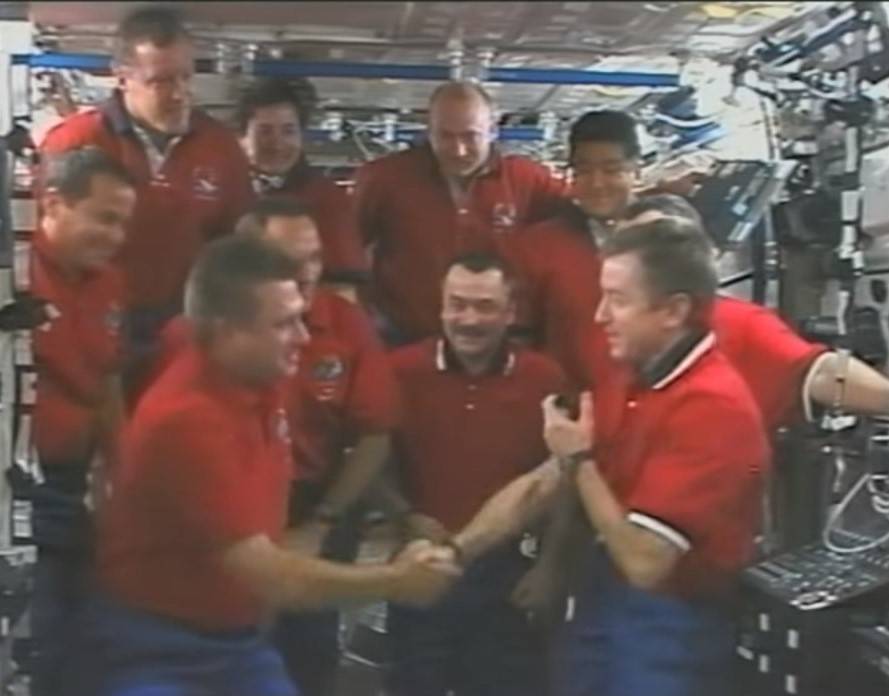

Left: Yuri I. Onufriyenko of Roscosmos, left, accepts command of the space station from outgoing commander NASA astronaut Frank L. Culbertson as the rest of the shuttle and station crews look on. Right: STS-108 astronaut Mark E. Kelly uses the shuttle’s Remote Manipulator System to return the Rafaello Multi-Purpose Logistics Module to Endeavour’s payload bay.
The following day, in a now traditional ceremony, Culbertson formally handed over command of the space station to Onufriyenko, with the rest of the joint crew looking on. After a few more transfers and crew handover activities, the crews closed the hatch to the MPLM and, using the RMS, Kelly removed it from the Unity module and placed it back into Endeavour’s payload bay, loaded with 1,700 pounds of equipment for return to Earth. After one final meal together, the station and shuttle crews went to their respective spacecraft and closed the hatches.


Left: The combined STS-108 and Expedition 3 and 4 crews enjoy a last meal together. Right: The space station flying over the Bahamas, as seen by the departing STS-108 crew.


Left: The STS-108 crew deploy the Student-Tracked Atmospheric Research Satellite for Heuristic International Networking Experiment 2 (STARSHINE 2) from Endeavour’s payload bay. Right: Space shuttle Endeavour making a landing at NASA’s Kennedy Space Center in Florida with the Vehicle
Assembly Building in the background.
On Dec. 15, with Kelly at the controls, Endeavour undocked from the space station. He flew the shuttle around the station as the crew photographed it. The following day, they deployed the Student-Tracked Atmospheric Research Satellite for Heuristic International Networking Experiment 2 (STARSHINE 2) from Endeavour’s payload bay. More than 30,000 students from 660 schools in 26 countries tracked STARSHINE 2 as it orbited the Earth for eight months. The students, who helped polish the satellite’s 845 mirrors, used the information to calculate the density of Earth’s upper atmosphere. On Dec. 17, Gorie brought Endeavour home for a smooth touchdown at KSC’s shuttle landing facility. The STS-108 mission lasted 12 days, 18 hours, 36 minutes, while the returning Expedition 3 crew of Culbertson, Dezhurov, and Tyurin logged 128 days, 20 hours, 45 minutes in space.
Enjoy this crew-narrated video about the STS-108 mission.

